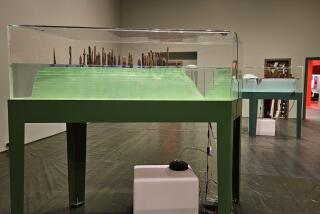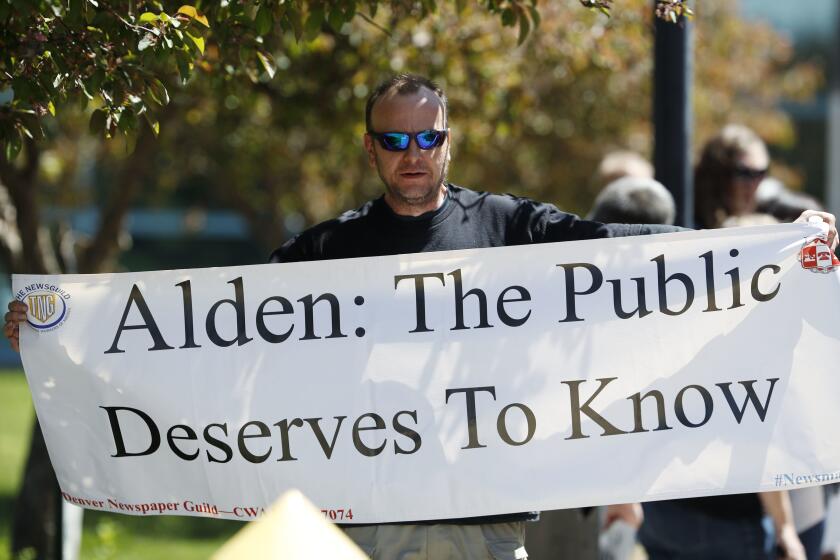Jeff Koons’ Whitney retrospective ending with 36-hour marathon viewing
This is the final weekend for “Jeff Koons: A Retrospective,” the controversial exhibition at the Whitney Museum of American Art that occupies all four floors of exhibition space. It will be the last show prior to the museum’s departure from Manhattan’s Upper East Side for a brand new facility in the meatpacking district on the Lower West Side, opening next spring.
When I stopped by Friday, the line of visitors waiting to enter stretched out the front door to Madison Avenue and around the corner down 75th Street.
The show has been a popular hit. When all is said and done, attendance — long past a quarter-million — will put it at or near the top of the list of “most visited” exhibitions in the Whitney’s 83-year history. The museum has announced it will stay open for 36 hours straight this weekend, a marathon viewing from 11 a.m. Saturday through 11 p.m. Sunday.
Critical reaction, on the other hand, has tended to fall into one of two camps: There’s “the end is nigh” crowd, with the retrospective as proof that contemporary culture is in full collapse; or, the “grin and bear it” folks, who say this is simply who we are as a society.
Neither one really describes the show, largely because they both take a black-and-white, all-or-nothing view. Apparently you’re either with Koons’ art or you’re against it — as if all of any artist’s work is either a triumph or a flop.
In reality, things fall on a gray scale. The problem with the retrospective is that it’s a curatorial mess. Koons is an important artist, having helped shift the Modernist dictum of “make it new” to the Post-Modern one of “keep it new.” But he’s also made a lot of mediocre (or worse) work. It’s all here, good and bad.
The show, featuring more than 100 works, is at least twice as large as it should be. The lard drags down the best work’s dizzying buoyancy. The paintings are the most obvious example.
Koons can be an impressive sculptor, but he’s an unfailingly awful painter. Neither he nor his studio, now said to employ scores of assistants who execute the canvases (in more ways than one), has ever made a painting worth looking at once, never mind twice.
Yet 15 very big ones are here, some with dimensions of 10-by-14 feet. Taking up acres of wall space, they’re pale, student-grade pastiches of James Rosenquist’s 1960s paintings, stitching together by hand commercial imagery from digitally manufactured “drawings.”
For every compelling Koons work on view, there’s at least one dud. The result is a show as inflated as his famous — and wonderfully subversive — stainless-steel “Bunny.” The creepy fecundity of a child’s vinyl blow-up toy transformed into a pristine trophy for the ages curls my toes. It’s all too much, which is of course a driving principle of Koons’s art.
In the retrospective, the Whitney usurped the “too much.” Koons might well not have signed off on anything less, but the overblown extravaganza seems mostly designed to mark the museum’s own imminent passage from an old venue to a brand-spanking-new one. (The Metropolitan Museum, guardian of all things yesterday, will be leasing the Whitney’s landmark Marcel Breuer building.) As the critical conflict demonstrates, the result is strange — a popular retrospective that’s a near-total bust.
Twitter: @KnightLAT
More to Read
The biggest entertainment stories
Get our big stories about Hollywood, film, television, music, arts, culture and more right in your inbox as soon as they publish.
You may occasionally receive promotional content from the Los Angeles Times.











